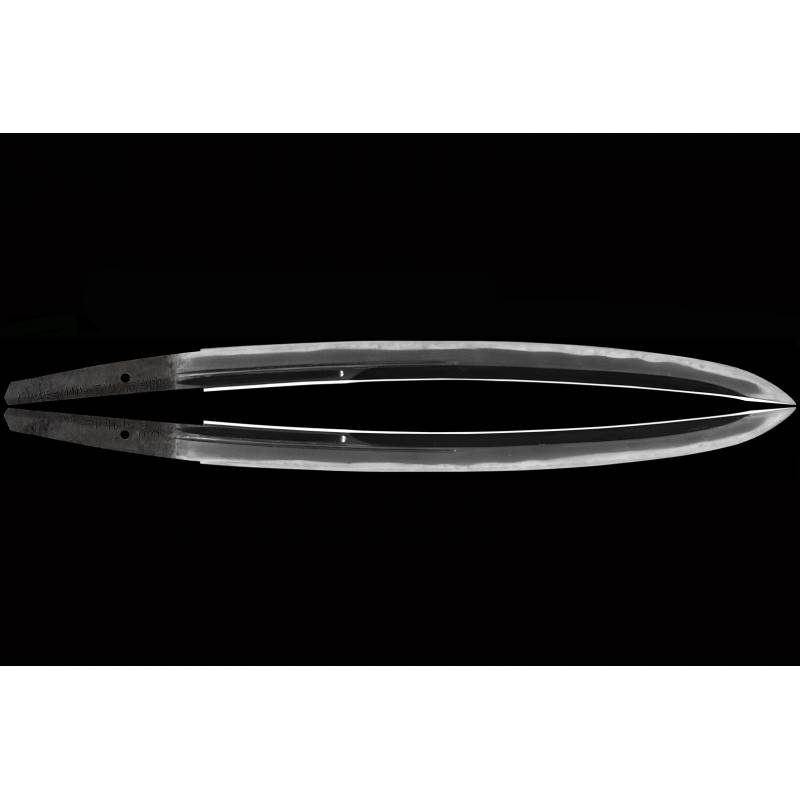














Japanese Wakizashi in Naginata style with excellent koshirae attributed to Toyoura Junin Kawachi Nio Kiyotada Tsukuru Kore Bunsei 5 Nen 2 Gatsu Kichijitsu inclusive NBTHK.
Sold!
This is a genuine Japanese Wakizashi with excellent koshirae attributed to Toyoura Junin Kawachi Nio Kiyotada Tsukuru Kore from Nagato province. The Wakizashi is forged around Edo period Bunsei era.
The amazing thing about this wakizashi is the naginata style, the suguta is unokbui zukuri. The naginata is best described as a Japanese halberd, originally used in Japan by members of the samurai class.
The condition is very well and the wakizashi comes with koshirae and is in fine polish. The hamon is choji gunome midare with nie-deki. The hamon is very bright and is beautiful. An ubu style flawless blade with a nice looking sori. A strong looking wakizashi with Nagareru and clear Jigane. The jigane is handforged tamahagane with well grained ko-itame Hada. One mekugi ana in the Nakago. The nakago includes a mei (signature) from Toyoura Junin Kawachi Nio Kiyotada Tsukuru Kore.
Koshirae
The tsuba is aikuchi, a smaller tsuba, which was often used, because in addition to the katana, a large wakizashi tsuba was probably very uncomfortable to wear in the obi. A complete wrap in black same gawa from the tsuka with qualitative ray skin. The fuchi and kashira are made of copper in kojiri. The saya also comes from the edo period in black Ishime Ji style with a family weapon in gold. The menuki is made of copper with a flower motif.
The Kogatana (little knife) is located in the side pocket of the saya. The Kozuka is a small handle of the Kogatana and shows a samurai reading a woodblock print.
On the other side you can find the a Kōgai, this is a hairdressing tool that is part of a sword mounting. Its implement is carried in a slot on the obverse of the saya.
Dimensions
Habaki: Suaka
Blade length: 38.3 cm
Sori : 1.1 cm
Width at the hamachi : 2.74 cm
Kasane : 0.58 cm
Length in saya
Overall length; 56.2cm
Saya length: 42,1 cm
This Japanese Wakizashi is authentic, and the matching NBTHK Hozon papers attesting the quality and authenticity.
Inclusive whole Oshigata. Oshigata is used by Japanese appraisers since before the Japanese middle ages, to record all the metallurgical activities in the steel of a Japanese sword that make it unique to any other sword.
When handling a Katana, one should consider the following few tips: